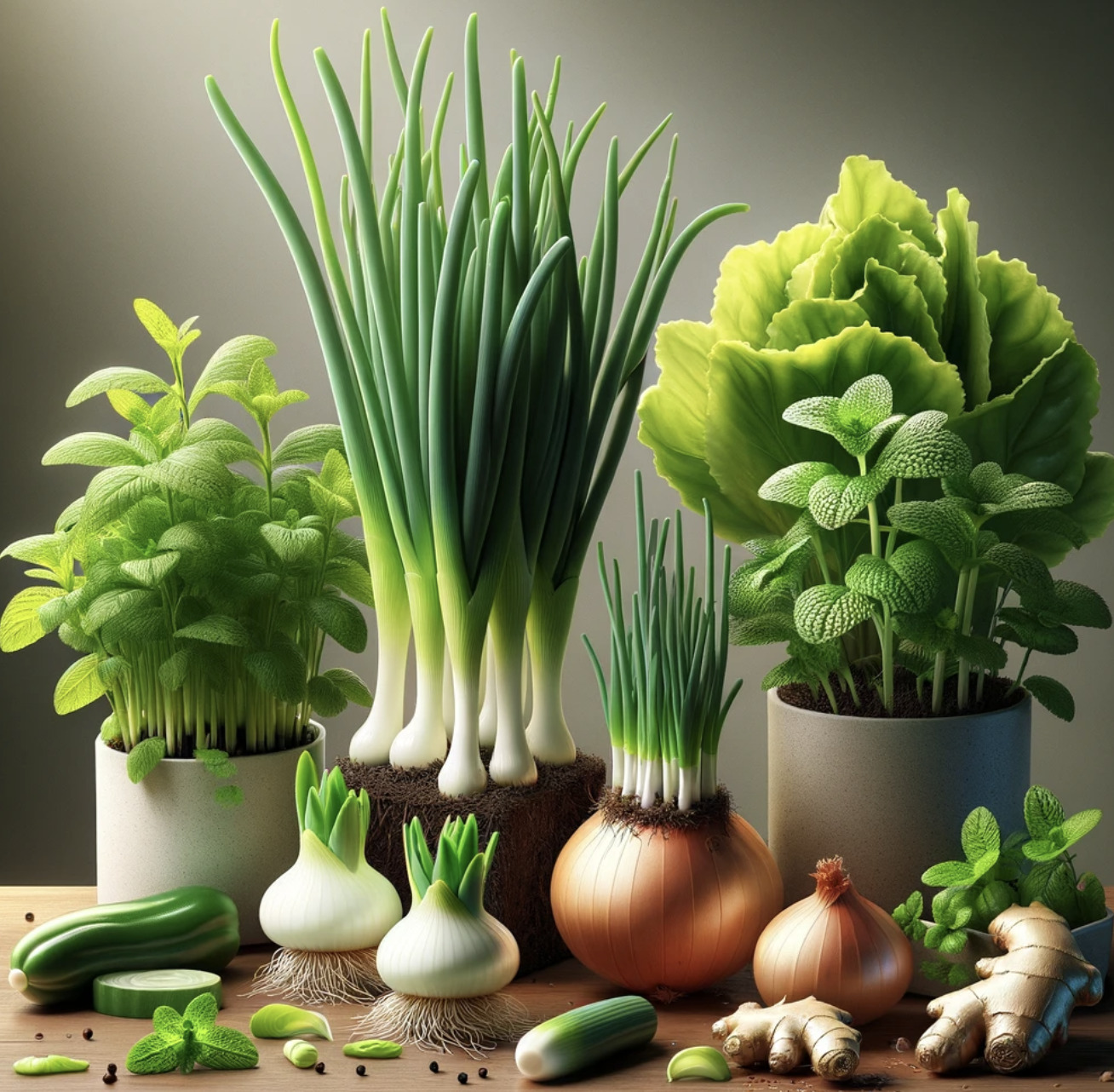An easy way to save money on food is to grow vegetables from scraps that you would otherwise throw away. Here is how you can transform leftover veggies into thriving, nutrient-rich crops right on your windowsill.
The practice of cultivating our own crops fosters a deeper connection to the food we consume.
Green Onions:
Green onions, with their mild and versatile flavor, are one of the easiest vegetables to regrow. Simply save the white roots with about an inch of the green stalk attached, and place them in a jar with water. After a week or so, you’ll notice new shoots emerging, and they can be transplanted into the soil for continual harvest.
Leeks:
Save the white root end of a leek and place it in a shallow dish with water. Watch as new growth appears. Once the roots are robust, transplant the leek into the garden or a container.
Garlic:
Garlic cloves that have started sprouting can be planted in soil (in a small pot or right into your garden) with the sprout pointing upwards. Ensure the soil is well-draining, and you’ll soon have a garlic bulb ready for harvest.

Potatoes:
Potatoes can be grown from potato peels! Don’t toss out sprouting potatoes. Instead, cut them into sections, ensuring each piece has an “eye,” a small bud where the new plant will sprout. Allow the cut pieces to air dry for a day or two, then plant the peelings in soil or a large container. Take care of them by watering regularly and providing plenty of sunlight. As the plant grows, cover the stems with more soil to encourage tuber development.
Kale:
To regrow kale, cut some leaves a few inches from the bottom of the stem and simply place them in a bowl with a little water. Place the bowl in a sunny area, and within a couple of weeks, new leaves will begin to sprout. Transfer to soil once the roots are well-established.
Lettuce:
Just like kale, lettuce can be grown from scraps. The next time you make a salad, save the base of the lettuce (with some leaves attached) and place it in a bowl with a little water. When new leaves emerge from the center of the plant, transplant into soil for a continuous harvest.
Onions:
Growing onions from scraps is simple. Save the bottom of an onion with the root attached and plant it directly in soil. Within a few weeks, you’ll see new green shoots emerging. If you have an onion that’s already started to sprout, plant it in soil and wait. In a few months, you will have a new onion.
Celery:
To grow celery from scraps, cut the base of a celery bunch and place it in a shallow dish with water. After a few days, new growth will start to appear in the center of the base. Once new shoots appear, transfer it to soil. Celery requires consistent moisture, so keep the soil damp for optimal growth.
Mint:
Mint is a hearty plant that grows easily from cuttings. Cut a sprig of mint from a healthy plant, remove the lower leaves, and place it in water until roots develop. Once the cutting has developed roots, you can plant it in a pot, and soon you’ll have a fresh mint plant ready for culinary use!
Ginger:
Ginger can be regrown from a piece of the root. Choose a piece that has several eye buds on it (they look like little points). Plant the ginger root in soil with the newest buds facing up, and before long, sprouts will appear above the soil, and roots will develop below the surface. You’ll soon have a ginger plant that produces rhizomes for harvest.
Other foods that can be grown in pots at home are sweet potato, rosemary, cilantro, avocado, lemons and bok choy.
Think twice before throwing away vegetable scraps! With a little effort, you can turn those leftovers into fresh, organic vegetables that provide a sustainable source of nutrition for you and your family.
There are many vegetables that you can regrow from kitchen scraps or clippings that you have taken from vegetables & herbs. Some of the vegetables not listed in this blog include: sweet potato, rosemary, cilantro, avocado (from seed), and bok choy.
Lisa Tsakos is a nationally recognized nutritional consultant and educator, author, and co-author of the Health Coach Collaborative’s Natural Nutrition Coach Certificate Program. She founded her company, Nu-Vitality Health & Wellness, in 1998 to provide natural nutrition and wellness support to businesses and organizations across Canada. She has presented thousands of nutrition seminars to clients which have included the Toronto Police Service, Telus Mobility, the University Health Network, and many more.



